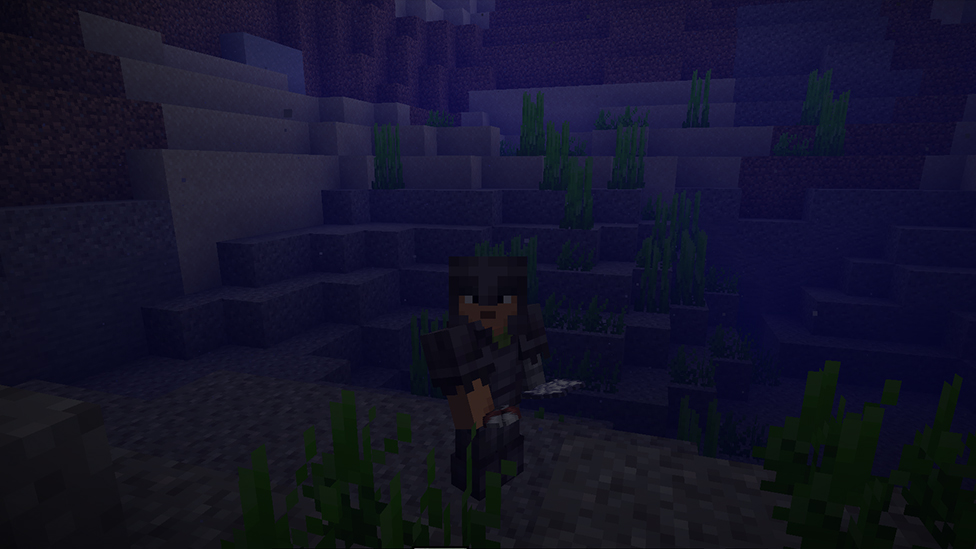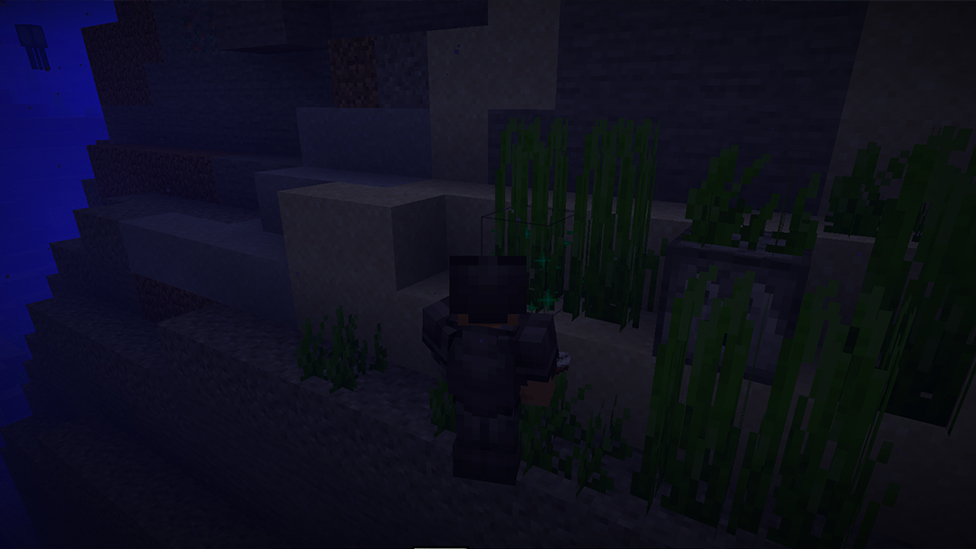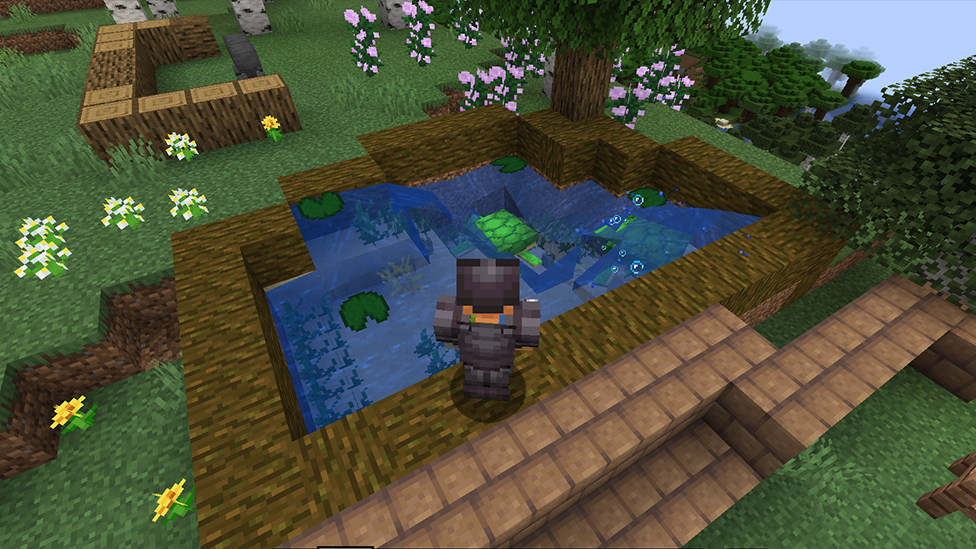Minecraft Seagrass
Make Your Own Minecraft Server For Free
Your own Minecraft server is only 5 minutes away! We support simple one click install for over 1000 unique modpacks.
Free Minecraft Server Hosting

Why Farm Seagrass?
In Minecraft seagrass plays a vital role in oceanic life. You’ll often find it swaying in rivers, oceans, underwater caves, and even swamps. Seagrass is unique since it can only be harvested with shears. That’s right—no fist punching or pickaxe swinging here. If you want to gather seagrass for turtle breeding, composting, or just for your aquatic builds, you’re going to need shears and a bit of bone meal.How Seagrass Grows: The Basics
Natural GenerationIn the wild, seagrass appears in both small and tall forms. It needs access to the sky, so it typically spawns in shallow bodies of water, like rivers, non-frozen oceans, and swamps. When exploring, keep an eye out for it near the water’s surface. But if you want to generate seagrass wherever you please, a bit of bone meal magic is all it takes.
Using Bone Meal
Bone meal is the secret sauce to farming Minecraft seagrass. Apply it to any submerged block, like dirt, gravel, or sand, and watch the seagrass pop up around you. For Java players, bone meal will only work on non-transparent blocks, while in Bedrock, it’s effective on submerged dirt, coarse dirt, sand, red sand, gravel, or clay blocks. Just remember that two water blocks need to be above the target block, with the lower one being non-flowing water. This simple trick lets you spread seagrass far and wide!
How to Harvest Seagrass
Seagrass can only be harvested with shears. Any other tool will destroy it, and you’ll end up empty-handed. When using shears:- Small Seagrass: Drops one seagrass item.
- Tall Seagrass: Drops two seagrass items (except when in Creative mode).
If you’re aiming to stockpile seagrass, make sure you’re equipped with plenty of shears before heading underwater. You don’t want to run out mid-harvest!
Setting up a Seagrass Farm: Manual vs. AFK Farming
Manual FarmingFor players who don’t mind getting hands-on, manual farming is the easiest way to collect seagrass quickly. Here’s how to do it:
- Choose a Location: Pick an area with plenty of underwater surfaces.
- Apply Bone Meal: Use bone meal on blocks beneath the water to generate seagrass. You’ll want to cover as much area as possible for a bountiful harvest.
- Harvest with Shears: Swim through and shear all the seagrass that pops up.
Manual farming is quick and efficient but can get a bit tiring if you need a large amount of seagrass.
AFK Seagrass Farming
If you prefer a hands-free approach, an AFK farm is the way to go. Here’s how to set one up:
- Apply Bone Meal: Set up dispensers to apply bone meal on submerged blocks continuously. The bone meal triggers new seagrass growth every time it’s applied.
- AFK with Shears: Equip your character with shears and left-click to harvest. When your shears break, have a system in place to replace them so you can keep harvesting without interruption.

Since seagrass farms can’t be fully automated (the player needs to use shears manually), an AFK farm offers the next best thing for long-term farming.
Other Ways to Obtain Seagrass
Turtles have a chance to drop seagrass (between 0-2 pieces) when defeated. With Looting enchantments, the maximum seagrass drop increases by 1 per level, but this method is neither sustainable nor efficient for farming. Best to leave turtles in peace!Unique Uses for Seagrass
Seagrass is surprisingly versatile! Here’s what you can do with it:- Turtle Breeding: Seagrass is essential for leading and breeding turtles. Feed two turtles seagrass, and you’ll soon have baby turtles joining the group. Pro tip: using seagrass on baby turtles speeds up their growth. When a baby turtle matures it drops a scute which can be used to craft turtle shells. Which you can then use for headgear for underwater adventures.
- Composting: Tossing seagrass into a composter has a 30% chance of chance of raising the compost level by 1
- Bone Meal Transformation: If you apply bone meal to regular seagrass, it’ll grow into tall seagrass—if there’s enough room. However, if there isn’t, you’ll end up wasting the bone meal, so make sure you’ve got the space to avoid loss.

Start Your Minecraft Journey with Scalacube
If you want to improve your Minecraft experience, consider minecraft server. With a Minecraft dedicated server, you can install 1,000+ mod packs and step into Minecraft’s extraordinary world. This allows you to spend unlimited time improving your skills and strategizing in the game to enjoy it. Not only that, but you'll have a smooth gaming experience without lags or errors. But the best part about this server is that it is reasonably priced while offering a wide range of additional features. Wrapping Up
Once you know all these steps you can step into the world of Minecraft seagrass farming. Whether you want to breed turtles or create an underwater paradise, seagrass is the material you need. Now grab your shears, stock up on bone meal, and make the ocean your farming playground!Frequently Asked Questions
How to get seagrass in Minecraft?
It may be found in all of Minecraft's underwater biomes, both tall and short. When harvested with shears, the short one drops one seagrass, while the tall one drops two. Don't just punch it; it'll break off into nothing in your hands. Fun fact: Turtles love seagrass.
How to harvest seagrass?
Seagrass can only be gathered using shears. Using any other tool, object, or the player's fist destroys seagrass and prevents it from dropping anything. When picked with shears, ordinary seagrass drops one item, while tall seagrass drops two seagrass items.
Can you bonemeal seagrass?
Applying bone meal to seagrass causes it to grow in height, just as regular grass. This bonemeal can be applied by a dispenser, but the player can only get it by breaking it with shears, making fully autonomous farms impossible.
Make Your Own Minecraft Server For Free
Your own Minecraft server is only 5 minutes away! We support simple one click install for over 1000 unique modpacks.
Start Your Server For Free!
Copyright 2019-2025 © ScalaCube - All Rights Reserved.